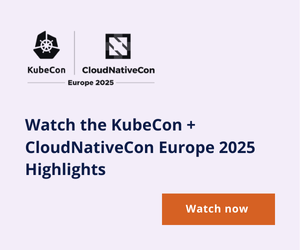-
OpenText Titanium X: Redefining DevOps for the AI Era
Discover how OpenText’s Titanium X transforms DevOps with AI-powered automation, seamless integrations, and enhanced security for faster, smarter software delivery.
-
Beyond Compliance: Neil Levine Reveals How Anchore is Revolutionizing SBOM Management
Explore SBOM evolution with Anchore’s Neil Levine, uncover new features, security insights, vulnerability ranking, and strategies to manage SBOM sprawl and future automation.
-
Zero Trust Authorization for Non-Human Identities: A Deep Dive with Cerbos' Alex Olivier
Explore non-human identity growth with Cerbos’ CPO Alex Olivier. Learn how Cerbos empowers zero-trust, real-time authorization for AI agents, IoT devices, and workloads.
-
OpenAI Ventures into Cybersecurity: A Strategic Investment in Adaptive Security
OpenAI invests in Adaptive Security, its first cybersecurity investment. $43M to combat AI-powered threats with new defence strategies.
-
Can AI-powered Tools Help with Network Management
Explore how AI tools are revolutionizing network management with automation, optimization, and predictive insights
-
Ana is the World’s First Autonomous AI/ML Engineer
OpenAna launches Ana, an autonomous AI/ML engineer that designs, deploys, and evolves machine learning systems with minimal human input.
-
Devtron Wants to Help DevOps Teams Tackle Performance & Troubleshooting Issues
Learn how Devtron helps DevOps teams with monitoring and logging to solve Kubernetes performance and troubleshooting.
-
The state of observability in 2025: a deep dive on our third annual Observability Survey
Dive into Grafana Labs' third annual Observability Survey for 2025! Uncover how observability practices are maturing, why traces are gaining traction, the enduring power of open source, the emerging role of AI, and how cost continues to drive tool selection across organizations of all sizes.
-
GitOps vs. DevOps: Key Differences Explained
GitOps and DevOps are often seen as interchangeable, but they serve distinct purposes within the software delivery lifecycle. This article breaks down their differences, tools, workflows, and where they overlap. Learn how GitOps focuses on infrastructure automation using Git as the source of truth, while DevOps represents a broader cultural shift aimed at collaboration and continuous delivery. Discover how combining both approaches can streamline development, enforce consistency, and boost deployment reliability.
-
Is It Time to Migrate? A Practical Look at Kubernetes Ingress vs. Gateway API
Still battling Kubernetes Ingress complexities? Discover why it's time to migrate! This guide unpacks the limitations of traditional Ingress and reveals how the Kubernetes Gateway API, implemented by Calico Ingress Gateway with Envoy proxy, offers a standardized, role-aware, and feature-rich solution for secure, streamlined traffic management.
-
Diskless Kafka is the Tide, and it’s Rising
Discover KIP-1150 Diskless Topics now live in Aiven Kafka BYOC, enabling Apache Kafka on AWS, Google Cloud, and Azure to write directly to object storage. Learn how this innovation slashes costs by up to 80%, eliminates operational toil, and maintains 100% Apache Kafka compatibility, ensuring zero vendor lock-in and a single logical cluster for all streaming workloads.
-
The 3 Es of Diskless Kafka BYOC
Explore three ways to buy Kafka in the cloud—Multi-Tenant SaaS, Single-Tenant SaaS, and Bring Your Own Cloud (BYOC)—and discover why Diskless BYOC offers significant economic, enforcement, and enterprise discount advantages for organizations operating Kafka at scale, challenging traditional fully-managed solutions.
Filter & Sort



















